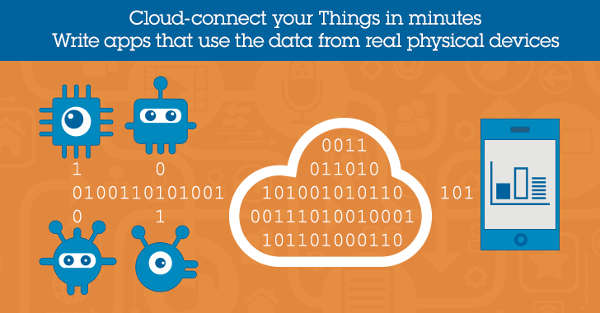| IBM Launches IoT Foundation |
| Written by Harry Fairhead | |||
| Tuesday, 21 October 2014 | |||
|
Just about everyone you can think of wants a slice of the Internet of Things pie and now IBM has placed its best bet for securing its IoT profits in the future - the IBM Internet of Things Foundation. What are they trying to sell you? The IoT is going to be big, really big. If you thought that mobile was big you need to think again. If you are involved in creating devices or systems that might be classified as being the IoT you will know that your real problems stem from hardware issues such as communications, battery life and so on. After that you hit software problems - protocols, reading and dealing with the hardware at a low level. Only well after you have all of this sorted out does your mind turn to how to get the data crunched and some results displayed. A very common solution when this sort of problem is considered is to create a REST interface or an Android/iOS app.
It is this "top end" of the problem that most companies are trying to help with. They want to provide the backend services which, to be honest, really aren't the big problem that is waiting to be solved. Yes, it is a problem and having a solution would be quite nice, but getting some standardization that would allow sensors to communicate locally would be much more worthwhile. The real reason that companies are trying to offer you backend services is that it is the easy option and one that it is very easy to see how they can make money by charging you for data and storage. IBM's IoT Foundation is part of its Bluemix cloud platform, but this really isn't particularly relevant. What it is offering is a cloud data collection system that allows you to connect your device and gather its data. You can then draw graphs and even send simple commands back to the device. The sort of application that IBM has in mind is the instrumented factory or other industrial facility. You might have a factory with lots of temperature sensors and heating controls and be able to pull all of this data together in the cloud and work out how to save money by optimising its control. Well, yes, but first you need to instrument the facility and this is no small task and currently there is no standard way of doing it. If you want to see what I mean try searching for "IoT temperature sensor" and you will discover that you have to do the job yourself using a development board. The IBM IoT foundation supports ARM mbed, TI BeagleBone, TI Simple Link, Intel Galileo, Raspberry Pi (B), Arduino Uno and custom boards. There is also an option to use a simulated device so that you can try out the wonders of the cloud data collection.
Basically to connect any of these devices you have to download and install some software. Once you have customized this software by providing a unique id, it will connect to the IBM cloud and upload data and accept basic commands. To send commands the app has to be registered, presumably for security reasons. Where the IBM offering gets slightly more interesting is that you can make use of its recently introduced Node-RED graphical programming system. This allows you to use Node.js to program the Arduino, Raspberry Pi or BeagleBone Black in JavaScript using graphical blocks that can be connected together. This would be made more exciting if the parts of the system that got to grips with the hardware were better developed. In each case you more or less end up running some other language to interface to the system - WiringPi for the Raspberry Pi, for example.
This might just develop into something interesting, but IBM and the others jostling to climb about the IoT cloud need to realize that, until the foundations are in place, the cloud is just an irrelevant extra. While I can create a REST interface in Python on a Raspberry Pi why should I give in and use a proprietary cloud that I will have to pay for? IoT analysis is the easy part. Not trivial but it is not the showstopper. The company that dominates the IoT will have to offer an end to end solution, well supported and well documented. More InformationIBM Internet of Things Foundation Related ArticlesNode-RED Another Way To The IoT Huginn - An Information Collection Agent Intel's New Edison Is As Small As A Postage Stamp
To be informed about new articles on I Programmer, install the I Programmer Toolbar, subscribe to the RSS feed, follow us on, Twitter, Facebook, Google+ or Linkedin, or sign up for our weekly newsletter.
Comments
or email your comment to: comments@i-programmer.info |
|||
| Last Updated ( Tuesday, 21 October 2014 ) |



